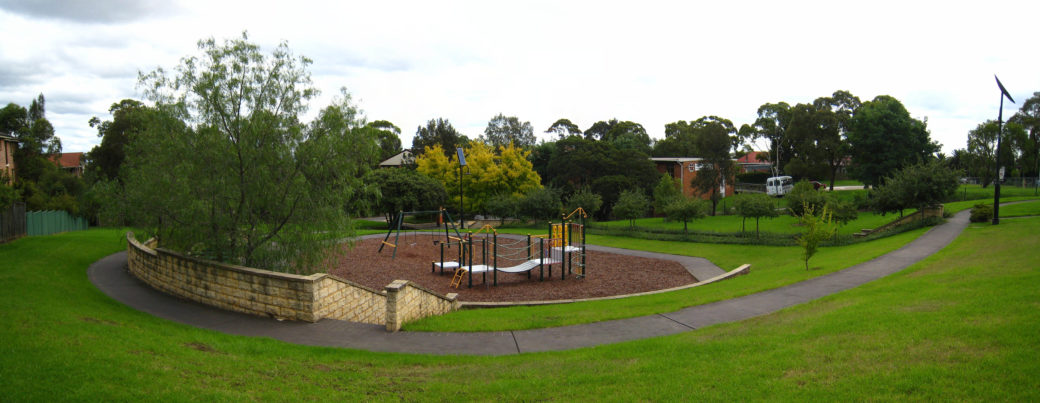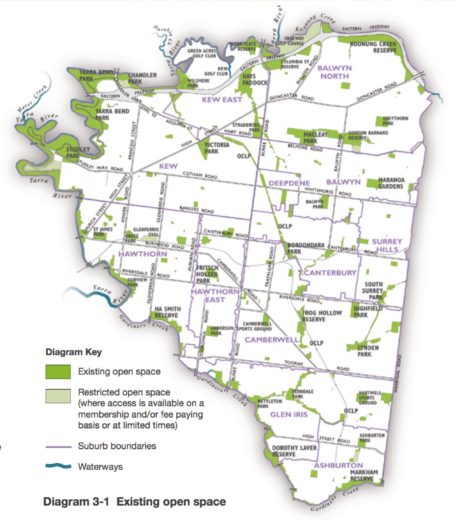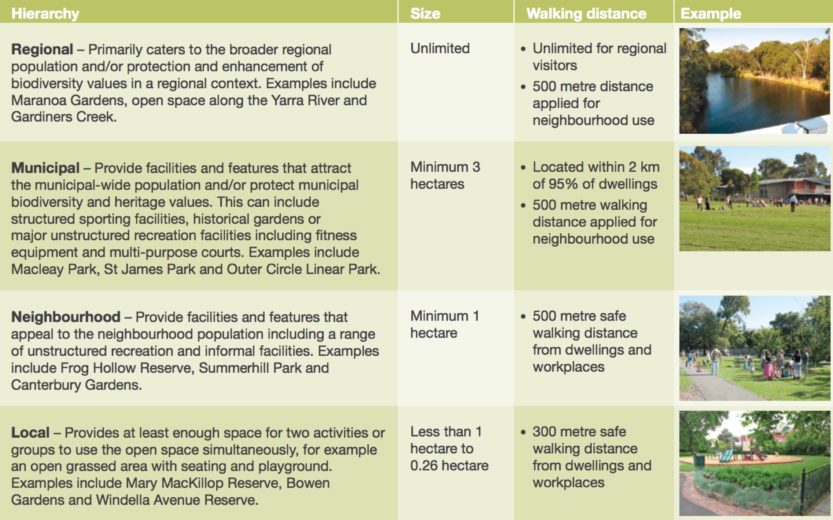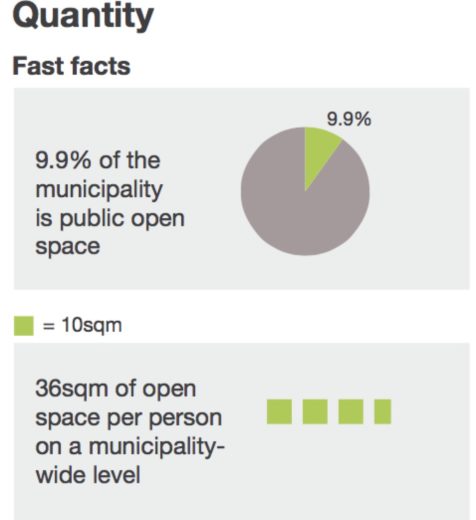Open space principles
and aims
This strategy has adopted the Vision from ‘Our Boroondara – Our City, Our Future’:A vibrant, livable city which fosters the cultural, environmental, economic and personal wellbeing of our community. The following open space principles and aims meet the municipal vision. Please note these principles are listed in alphabetical order, as all of them are of equal importance.
Accessible
The open space network is accessibleto the Boroondara community including people of all ages, abilities, health, gender and cultural background.
Adaptable
Open space and its facilities are flexible to adapt to changing environmental,recreational and social needs and expectations.
Connected
The open space network and other public land provides recreational, habitat corridors and sustainable commuter transport corridors and links that improve accessibility along with recreational and environmental values of open space.
Cultural
Open space reflects and celebrates indigenous and non-indigenous cultural heritage and contemporary values.
Diverse
The open space network provides a diversity of places for the community to visit and habitats for native flora and fauna.
Equitable
Open space is within easy and safe walking distance of the Boroondara community.
Recreational
Open space encourages the community to be outside, play sport, exercise and/or keep fit to improve their health and wellbeing.
Shared
The open space network will continueto embrace a variety of values and uses encouraging respect and consideration of all in sharing the space.
Social
Open space provides opportunities for the Boroondara community to meet, socialise and participate in a variety of activities so it is accessible and safe for all.
Sustainable
The open space network is designed and managed to maximise opportunities to mitigate climate change, improve biodiversity and achieve improved ecological outcomes.

Existing open space in Boroondara
The City of Boroondara lies within the clan territory of the Wurundjeri Willam who moved seasonally through the area spending the summer months on the banks of the Yarra River where food was abundant. The Yarra River and Gardiners Creek frame three of the four boundaries of the municipality and are highly valued biodiversity and recreational corridors. The Yarra River changes from a broader floodplain with wetlands in Kew East, to the steeply graded escarpment sections in Yarra Bend and Studley Parks. The Main Yarra Trail and other path networks provide connectivity along the open space corridor. Popular recreational uses include walking, cycling, jogging, picnics, golf, kayaking and rowing.
Substantial areas of open space along Gardiners Creek include HA Smith Reserve, Patterson Reserve, Nettleton Park, Eric Raven Reserve, Dorothy Laver East and West Reserves and Markham Reserve.
These accommodate a range of structured sporting facilities, along with unstructured recreation and informal use. The shared trail moves between the cities of Stonnington and Boroondara due to discontinuity of public land ownership. Other key waterway corridors include
the Koonung Creek system in the north through Balwyn North and the linked system of open space along Back Creek in Glen Iris.
Away from the waterways native planting
in open space is featured in Maranoa Gardens, which has a unique collection of Australian flora. Directly adjoining this is the remnant woodland in Beckett Park. Other areas of remnant woodland are present in Belmont, Cato and Greythorn Parks, along with scattered remnant indigenous trees in a number of other open spaces.
Contrasting the native and indigenous vegetation character in the City are the well-established exotic plantings in the heritage gardens. Some of the earliest include Creswick Gardens, Yarra Bank Reserve and St James Park followed by those from the early 1900s including Read Gardens, Central Gardens and Alexandra Gardens. While the railways had a key role in facilitating urban development, the closure of two of these lines including
the shorter Spur Line and the Outer
Circle Railway has shaped open space connectivity through the city today. The Anniversary Trail in the Outer Circle Linear Park today link some larger open spaces along it including Boroondara Park and Frog Hollow Reserve.
The diversity of open space encourages people outdoors and Boroondara has above average levels of participation
in exercise compared with other municipalities. This is assisted by the large number of quality outdoor structured and unstructured sporting facilities positively contributing to an active and healthy community.

Open space framework

Character classification for Boroondara
The character of open space is influenced by its inherent natural and physical characteristics, along with its urban context and facilities. Defining the primary and secondary character of each open space assists to identify if there are gaps in the provision of different types of open space. The strategy has assigned a primary and secondary character classification to all open space. In Boroondara just over 30 per cent of the open space is classified as Nature conservation representing the largest proportion of open space compared with other character types. These are located primarily along the waterway corridors. Open space with Sporting as the primary character comprises just under 30 per cent of open space. The remaining 40
per cent is made up of a diversity of character types with just over 14 per cent being Linear and nearly 11 per cent being Informal. The primary character classification guides future design and management priorities for open space. The character of some open spaces may change over time to better meet diverse open space needs of the changing community and environment.
Quality
The quality of open space is important as it influences whether the open space is well used, appreciated and meets its intended function and value. Each open space is influenced and shaped by a range of factors including its size, form, use, location, design, adjoining use and history. The diversity of the character and quality of open space appeals to different age groups and those of all abilities.
The quality of each open space is assessed as to whether the open space meets the existing and forecast community needs based on the consultation outcomes, the site assessment and research into forecast change and other influences. The combined results of this analysis influences whether the open space requires any change, or is adequately meeting existing and future needs.
Where the quality is considered inadequate now or in the future, actions for upgrading the open space or provision of additional open space are included in this strategy.

